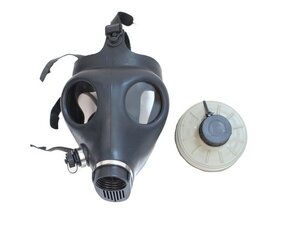Any time there is a threat of biological or chemical attack, the first thing you hear about is gas masks. Gas masks more generically known as respirators, are also an important part of industrial safety on a daily basis. They protect workers against everything from flour dust in a grain elevator to the damaging organic chemicals in paint spray.
When most people think about gas masks or respirators, what they usually envision is a tight-fitting plastic or rubber face mask with some sort of filter cartridge. The mask covers the nose and mouth. These are called half-mask air-purifying respirators. There are also various other types of gas masks available in the market. You can also find military grade gas mask via https://www.gasmaskpro.com/gas-masks

Depending on the chemical or biological agents in the environment, a half mask may not be sufficient because the eyes are very sensitive to chemicals and offer an easy entry point for bacteria. In this case, a full-face respirator is called for. It provides a clear face mask or clear eye pieces that protect the eyes as well.
Air-purifying respirators have two advantages:
- They are the least-expensive option.
- They are the least-complicated option.
The problem with air-purifying respirators is that any leak in the mask makes them ineffective. The leak could come from a poor fit between the mask and the user’s face, or from a crack or hole somewhere on the mask. Two other types of respirator systems solve the leak problem. The supplied-air respirator uses the same sort of filter cartridge found in an air-purifying respirator.
